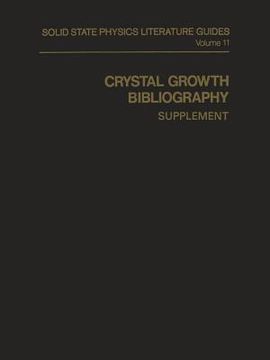Share
Crystal Growth Bibliography: Supplement (in English)
Keesee, A. M. (Author)
·
Springer
· Paperback
Crystal Growth Bibliography: Supplement (in English) - Keesee, A. M.
$ 52.09
$ 54.99
You save: $ 2.90
Choose the list to add your product or create one New List
✓ Product added successfully to the Wishlist.
Go to My WishlistsIt will be shipped from our warehouse between
Thursday, June 27 and
Friday, June 28.
You will receive it anywhere in United States between 1 and 3 business days after shipment.
Synopsis "Crystal Growth Bibliography: Supplement (in English)"
Man's first experience with the ordered state of matter to which we now apply the generic term "crystals" came about when he found specimens of some of the natural crystalline mineral substances that are re- latively common in the surface and near-surface areas of the earth's crust. His first widespread use of these natural materials in which their crystalline nature was of importance was undoubtedly in fabricating jewelry and otherwise adorning his weapons, tools, and household items. Both the Old and New Testa- ments of the Bible document the use of crystalline gems, and the Romans are credited with first employing diamonds-a metastable crystalline form of carbon-in jewelry. Various civilizations appear to have ascribed magical powers to some natural crystals, and they are known to have been widely accepted in Europe as having medicinal properties during the Middle Ages. Given early man's appreciation of the symmetry and beauty of natural crystals, it is not surprising that his earliest interest in working with these materials appears to have been directed toward techniques for duplicating or manufacturing these sub- stances that were so highly valued as gems. Although the exact beginning of the science that we now know as "crystal growth" cannot be precisely specified, we do know that Robert Boyle had attempted to grow crystals that could be used as gems prior to 1672. Much later, in 1873, M. A.
- 0% (0)
- 0% (0)
- 0% (0)
- 0% (0)
- 0% (0)
All books in our catalog are Original.
The book is written in English.
The binding of this edition is Paperback.
✓ Producto agregado correctamente al carro, Ir a Pagar.

